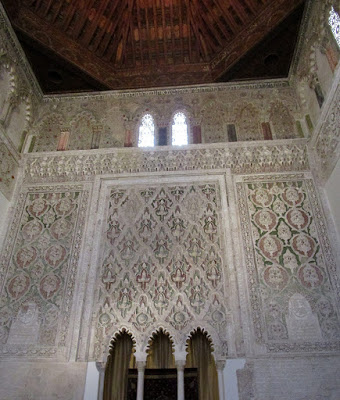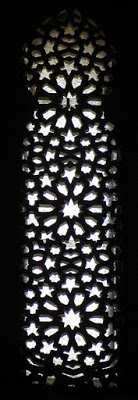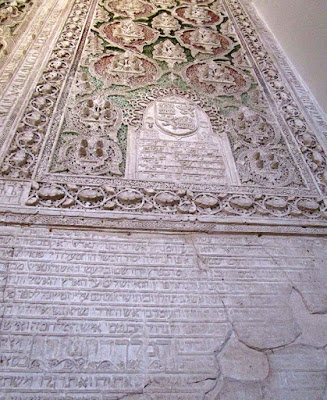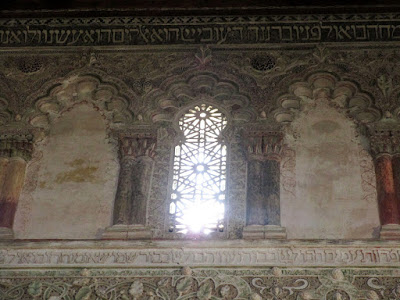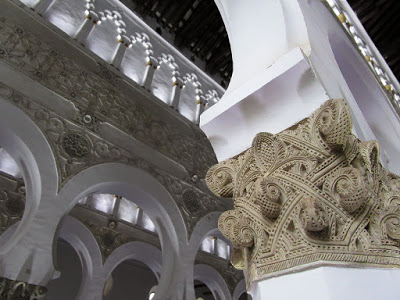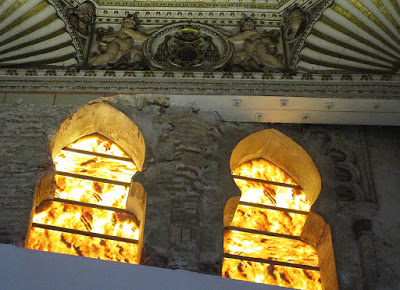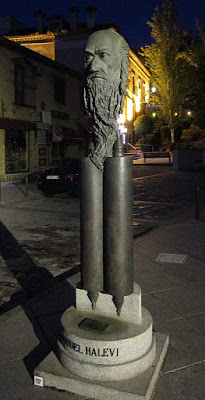 |
| SAMUEL HA-LEVI ABULAFIA. OUR HOTEL IN BACKGROUND. |
Toledo has two fascinating examples of ancient synagogues. Of course, both were converted to churches centuries ago but, unlike so many of these buildings in Spain, the two in Toledo are no longer used as houses of worship and are instead museums dedicated to their Jewish history.
And, once again, I DO go on. Skip the history if you have no interest and just look at the pictures. But don’t miss the closing paragraph after all the photos.
Click to fargresern the images… that’s enlarge in Yiddish… Or at least I think it is… I had to look it up. At least I know it’s not farkrimen, which is distort. Oh, just go ahead and click already. What do you need, an engraved invitation?
El Transito
The first, Sinagoga del Tránsito, was founded in 1356 by Samuel ha-Levi Abulafia, Treasurer to King Peter of Castile — until the king had him executed in 1460.
After all Jews were finally expelled from Spain in 1492, El Tránsito was converted to a church, Nuestra Señora Del Transito.
It was a military headquarters during the Napoleonic Wars, became a national monument in 1877, and was transformed into the Sephardic Museum beginning in 1910.
Santa María La Blanca
Built sometime around the year 1200 and originally called Ibn Shushan Synagogue or The Congregational Synagogue of Toledo, this is considered (with some dispute) the oldest synagogue building (still standing) in Europe. It became a church in the very early 1400s and is still owned and now preserved by the Catholic Church as a museum.
El Transito/Sephardic Museum
 |

